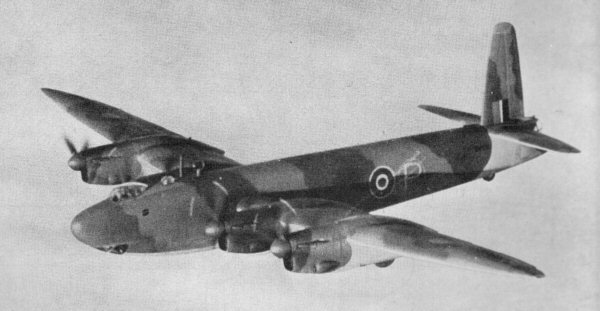These are most of the senior RAF officers between 1919 and 1939 - Group commanders, Area Commanders! staff College, Air Council, etc holding rank of Air Cdre or higher on 3 Sept 39
Trenchard: Royal Scots (Infantry)
Jack Salmond: King’s Own Royal Lancaster Rgt (infantry)
Geoff Salmond: Royal Artillery
Ellington: Royal Artillery
Newall: Royal Warwickshire, then 2nd Gurkha Rifles (infantry)
Portal: Royal Engineers
Jack Higgins: (AOC Iraq) - R Artillery
John Steel: (ADGB and first AOC Bomber Command) - Royal Navy
Brooke-Popham - Oxfordshire Light Infantry
Ludlow-Hewitt: Royal Irish (infantry)
Tedder: Dorsetshire Regiment (infantry)
Boyd: 5th Indian Cavalry
Gossage : Royal Field Artillery
Mitchell: Dorsetshire Regiment (infantry)
Courtney: RN
MacLean: Royal Fusiliers (infantry)
Dowding: Royal Garrison Artillery
Leigh Mallory: Lancashire Fusiliers (infantry)
Douglas: Royal Field Artillery
Longmore: RN
Cave-Browne-Cave: RN
Burnett: Highland Light Infantry (but previous service with Imperial Yeomanry as Pte in Boer War saw attached service to them from HLI, and then with West African Frontier Force, so some mounted infantry experience; left Army pre-1914; rejoined, straight to RFC
Bowhill: RN
Nicholl: London Scottish Volunteers (infantry); S Rhodesian Volunteers (infantry)
Swann: RN
Game: Royal Artillery
Webb-Bowen: Bedfordshire Regiment (infantry)
Becke: Sherwood Foresters (infantry; retired 1920
Pitcher: 24th Rgt of Foot, but transferred to Indian Cavalry (retired 1929 after 2 x Group commands)
Masterman: RN
MacEwen: Argyll & Sutherland Highlanders
Scarlett: RN
Tyssen: Somerset Light Infantry
Saul: Royal Army Service Corps
Andrews: Royal Scots (sneaks into list by 2 days)
Hill: Northumberland Fusiliers (infantry)
Vyvyan: RN
Babington: Royal Hampshire Regiment
Sutton: Westmoreland & Cumberland Yeomanry (mounted regiment, but he joined October 14 and was RFC by autumn 1915)
Blount: Queen’s (Royal West Surrey) Regiment (infantry. Great-Great Uncle of James Blunt, by the by)
Harris: Rhodesia Regiment
Coningham: Canterbury Mounted Regiment. Invalided out after 18 months, joined RFC
Pierse: RN
Freeman: Manchester Regiment (infantry), but RFC before Aug 1914
D’Albiac: Royal Marines
Joubert: Royal Field Artillery
Barratt: Royal Field Artillery
Playfair: Royal Field Artillery
Gerrard: Royal Marines
Gordon: Royal Marines
Foster: Royal West Kent (infantry)
Baldwin: R Irish Hussars (cavalry)
Quinnell: Royal Artillery
Herbert: R Warwickshire Rgt (infantry; strictly speaking, shouldn’t be on list as retired as an Hon Air Cdre, but held important training role in mid-20s)
SW Smith: Royal Field Artillery
There are some others, but - could you tell me where this notion that the inter-war RAF was dominated by cavalry officers comes from, please? There were more Royal Marines (via the RNAS, of course) than donkey wallopers…
The issue, in part, is that the RAF had nowhere near the social cachet of the cavalry regiments, and many officers with a pre-war cavalry background ((who’d joined the RFC on attachment from their regiments, which - like the RFC- specialised in recce as it sounded interesting), had no intention of leaving the Army.
Trenchard: Royal Scots (Infantry)
Jack Salmond: King’s Own Royal Lancaster Rgt (infantry)
Geoff Salmond: Royal Artillery
Ellington: Royal Artillery
Newall: Royal Warwickshire, then 2nd Gurkha Rifles (infantry)
Portal: Royal Engineers
Jack Higgins: (AOC Iraq) - R Artillery
John Steel: (ADGB and first AOC Bomber Command) - Royal Navy
Brooke-Popham - Oxfordshire Light Infantry
Ludlow-Hewitt: Royal Irish (infantry)
Tedder: Dorsetshire Regiment (infantry)
Boyd: 5th Indian Cavalry
Gossage : Royal Field Artillery
Mitchell: Dorsetshire Regiment (infantry)
Courtney: RN
MacLean: Royal Fusiliers (infantry)
Dowding: Royal Garrison Artillery
Leigh Mallory: Lancashire Fusiliers (infantry)
Douglas: Royal Field Artillery
Longmore: RN
Cave-Browne-Cave: RN
Burnett: Highland Light Infantry (but previous service with Imperial Yeomanry as Pte in Boer War saw attached service to them from HLI, and then with West African Frontier Force, so some mounted infantry experience; left Army pre-1914; rejoined, straight to RFC
Bowhill: RN
Nicholl: London Scottish Volunteers (infantry); S Rhodesian Volunteers (infantry)
Swann: RN
Game: Royal Artillery
Webb-Bowen: Bedfordshire Regiment (infantry)
Becke: Sherwood Foresters (infantry; retired 1920
Pitcher: 24th Rgt of Foot, but transferred to Indian Cavalry (retired 1929 after 2 x Group commands)
Masterman: RN
MacEwen: Argyll & Sutherland Highlanders
Scarlett: RN
Tyssen: Somerset Light Infantry
Saul: Royal Army Service Corps
Andrews: Royal Scots (sneaks into list by 2 days)
Hill: Northumberland Fusiliers (infantry)
Vyvyan: RN
Babington: Royal Hampshire Regiment
Sutton: Westmoreland & Cumberland Yeomanry (mounted regiment, but he joined October 14 and was RFC by autumn 1915)
Blount: Queen’s (Royal West Surrey) Regiment (infantry. Great-Great Uncle of James Blunt, by the by)
Harris: Rhodesia Regiment
Coningham: Canterbury Mounted Regiment. Invalided out after 18 months, joined RFC
Pierse: RN
Freeman: Manchester Regiment (infantry), but RFC before Aug 1914
D’Albiac: Royal Marines
Joubert: Royal Field Artillery
Barratt: Royal Field Artillery
Playfair: Royal Field Artillery
Gerrard: Royal Marines
Gordon: Royal Marines
Foster: Royal West Kent (infantry)
Baldwin: R Irish Hussars (cavalry)
Quinnell: Royal Artillery
Herbert: R Warwickshire Rgt (infantry; strictly speaking, shouldn’t be on list as retired as an Hon Air Cdre, but held important training role in mid-20s)
SW Smith: Royal Field Artillery
There are some others, but - could you tell me where this notion that the inter-war RAF was dominated by cavalry officers comes from, please? There were more Royal Marines (via the RNAS, of course) than donkey wallopers…
The issue, in part, is that the RAF had nowhere near the social cachet of the cavalry regiments, and many officers with a pre-war cavalry background ((who’d joined the RFC on attachment from their regiments, which - like the RFC- specialised in recce as it sounded interesting), had no intention of leaving the Army.

